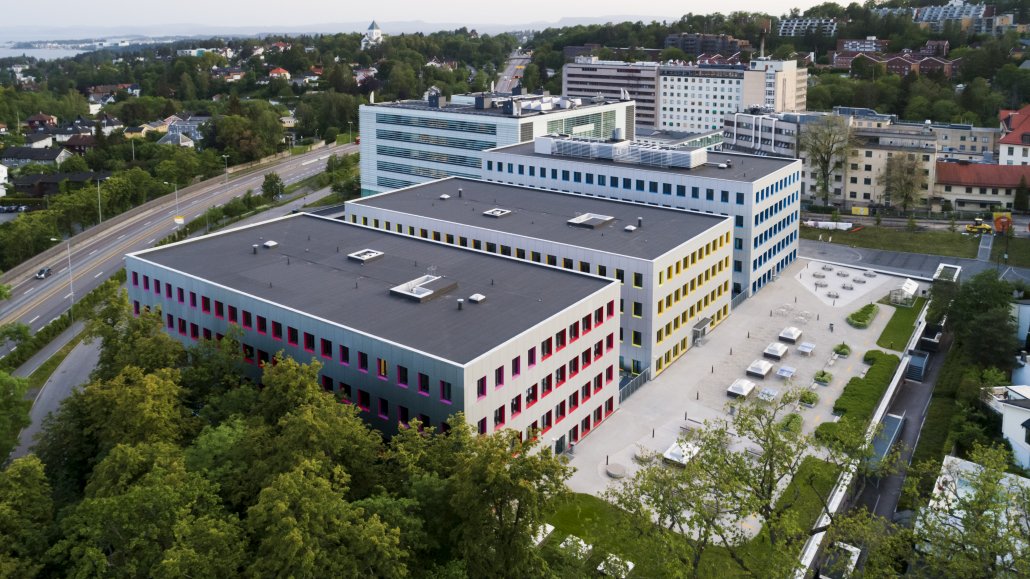Oslo Cancer Cluster becomes a member of Oslo Science City

How can we solve societal challenges, such as cancer, by creating a power centre for innovation in Oslo? This is the key question Oslo Science City – the first innovation district in Norway – hopes to answer.
The ambition of Oslo Science City is to become a world leading innovation district that contributes to research excellence, jobs creation, the green shift and sustainable economic development.
“We intend to develop a vibrant city area where people meet to innovate and explore what we still don’t understand,” said Christine Wergeland Sørbye, CEO of Oslo Science City.
In order to achieve this, Oslo Science City’s strategy is to facilitate cooperation between leading research groups, students, businesses and the public sector. Key actors in the district, including the City of Oslo, Oslo University Hospital and the University of Oslo, are now working together to facilitate the development of the area.
“We will develop a powerhouse for innovation, research and business, and a good place to live,” said Wergeland Sørbye.
Oslo Cancer Cluster joined Oslo Science City in June 2020 to contribute to boosting innovation in this knowledge-intensive area.
”Innovation thrives where there are hard problems that need to be solved,” said Ketil Widerberg, general manager of Oslo Cancer Cluster.
“Cancer is one of the major societal challenges we face today. For over a decade, Oslo Cancer Cluster has worked tirelessly to enable researchers and investors, private companies and public hospitals to work closer together to solve this challenge. We have succeeded in some first steps, now is the time to get to the next level. Utilizing the potential in immunology and digitalisation with Oslo Science City will be key to achieve this.”

Ketil Widerberg, general manager of Oslo Cancer Cluster, sees the potential of connecting immunology and digitalisation in the future innovation district. Photo: Oslo Cancer Cluster / Stig Jarnes
Wergeland Sørbye is happy to welcome Oslo Cancer Cluster as an active partner in developing Oslo Science City:
“Oslo Cancer Cluster has unique competencies and a long track record, and we are looking forward to learn from you! Together with the University of Oslo, SINTEF, Oslo University Hospital, the City of Oslo and our other members, Oslo Cancer Cluster will play an important role in realizing the potential for innovation, new jobs and value creation. It is important, and it will be fun!”

Oslo Cancer Cluster Innovation Park, the Oslo University Hospital research building and Norwegian Radium Hospital are located in the new innovation district Oslo Science City. Photo: Oslo Cancer Cluster / Christian Tandberg
A vibrant area to live, work, play
There are many innovation districts around the world, yet there is no fixed recipe for how successful innovation districts are developed.
“Developing such an area could be described more as an art than science.” Wergeland Sørbye said.
“However, research highlights the need for certain key functions. For example, you need strong anchor institutions that attract other actors, such as a university or university hospital, and you need to facilitate the cooperation based on trust between the different organizations and stakeholders in the area. Many do this by establishing a joint membership organization, which is what we did with Oslo Science City.”
Furthermore, it is essential to develop a multifunctional area with a critical mass of knowledge-intensive businesses. The ideal innovation district is a vibrant place where people can “live, work and play”, with services and cultural functions. It must also be easy to move around in the area, on foot, bike or public transportation.
“A key lesson from other innovation districts is the importance of adapting to the local context,” Wergeland Sørbye said.
However, no one has previously developed innovation districts in Norway. This makes it valuable to learn from international examples. Some innovation districts that have provided inspiration in the endeavour to develop Oslo Science City are Stockholm Science City, Copenhagen Science City, White City in London and Kendal Square in Boston.
Please follow the Oslo Science City official website for further updates on the development of the innovation district.






